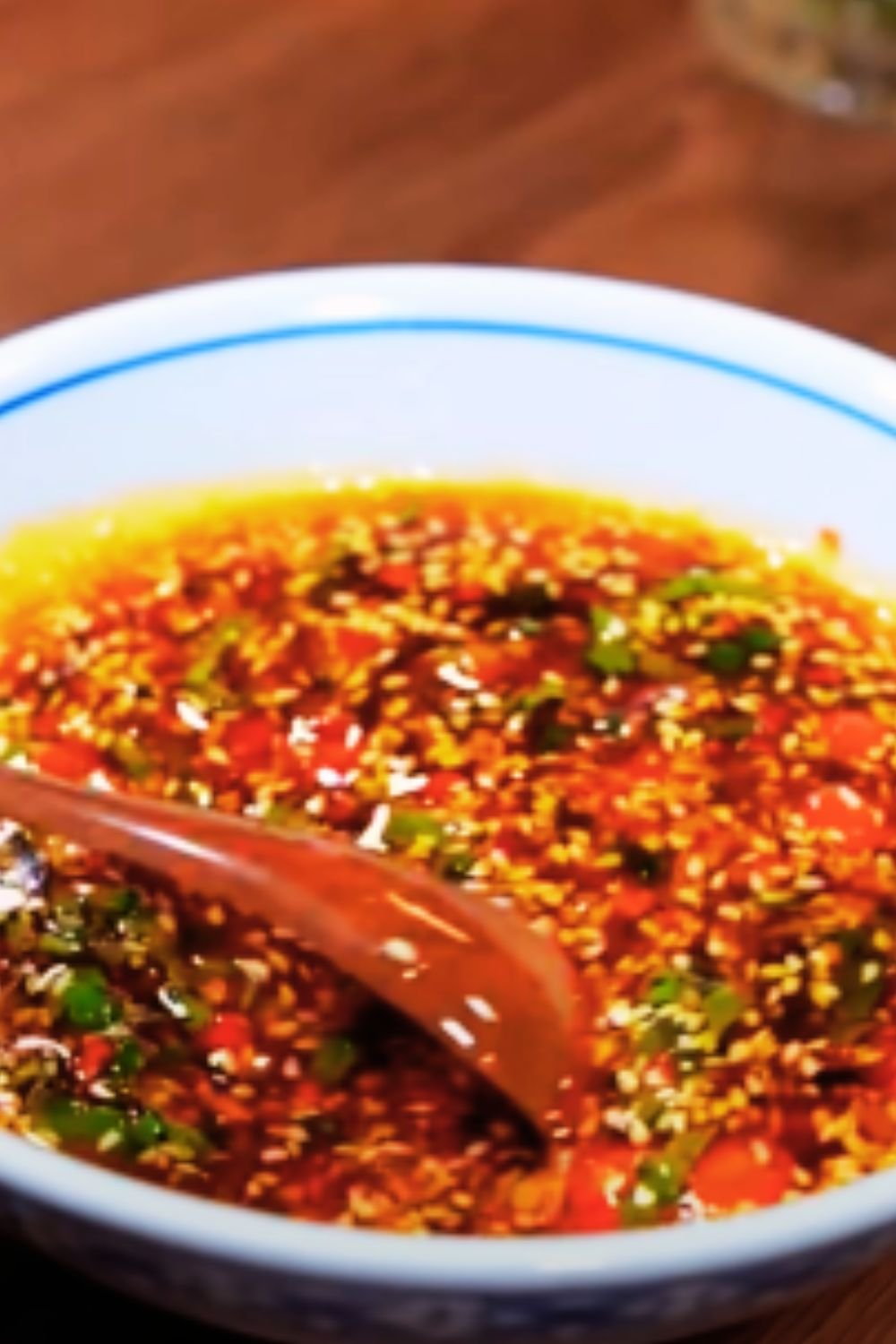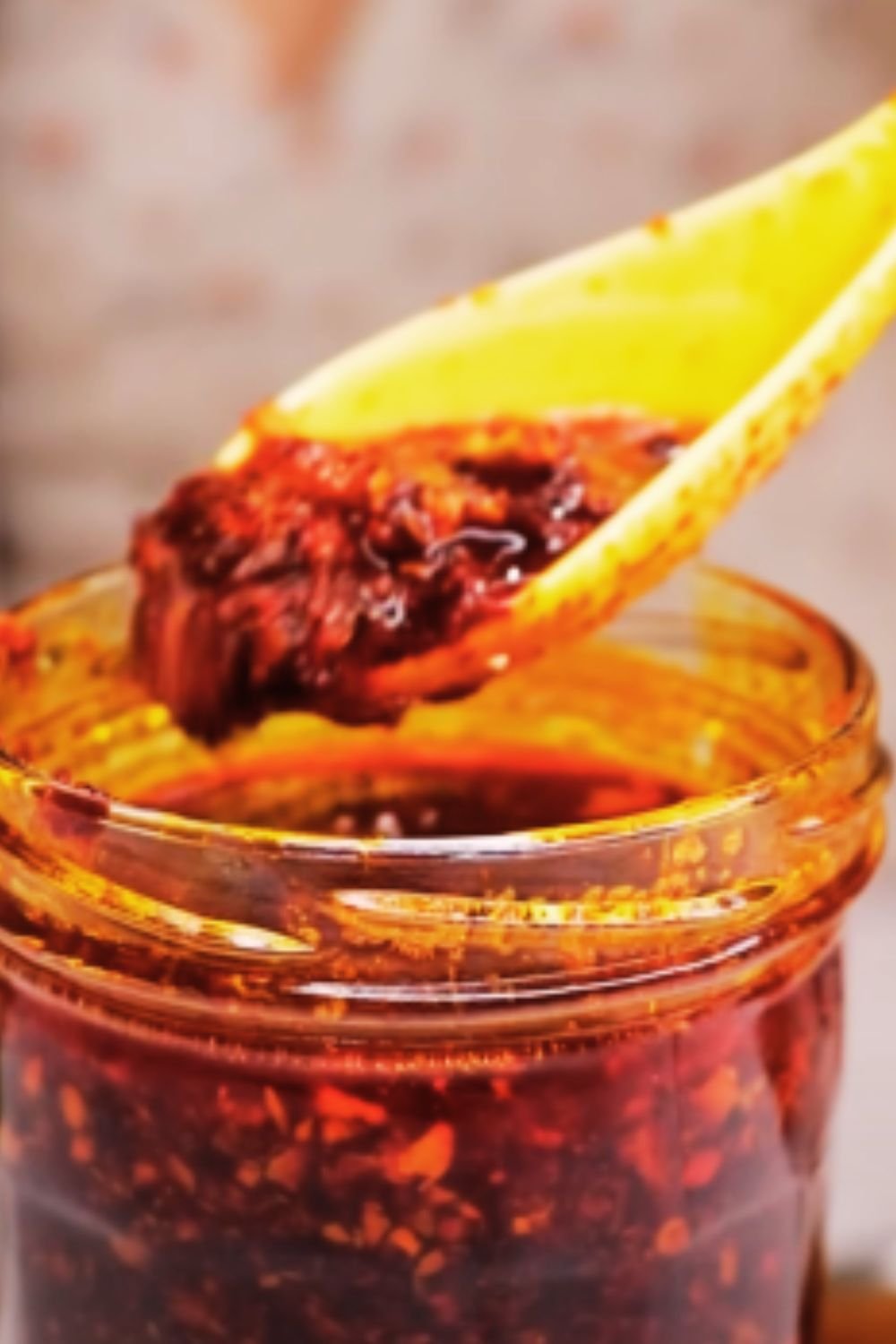If you’ve ever wandered through the bustling hawker centers of Malaysia or Singapore, chances are you’ve encountered the powerful aroma of belacan. This pungent, fermented shrimp paste is the backbone of many Southeast Asian dishes, and nowhere is it more celebrated than in Malaysian Chinese cuisine. Today, I’m excited to share with you one of my favorite condiments: belacan sauce – a spicy, tangy concoction that adds an explosion of flavor to practically anything it touches.
What is Belacan?
Before diving into the sauce, let’s understand the star ingredient. Belacan (pronounced “buh-LAH-chan”) is a fermented shrimp paste that serves as the foundation of many Malaysian dishes. It’s made by mixing small shrimp or krill with salt, then fermenting the mixture until it develops a deep, complex umami flavor.
Belacan comes in solid blocks with a color ranging from pinkish-brown to deep brown, depending on the fermentation process. When raw, it has an intense aroma that some newcomers find challenging, but once cooked, it mellows into a beautiful savory depth that transforms dishes.
As a Malaysian Chinese cooking enthusiast, I’ve grown up with belacan as a pantry staple, and I’m thrilled to share this special condiment that brings joy to our family meals.
The Cultural Significance of Belacan
Belacan holds a special place in Malaysian Chinese cuisine. It represents the beautiful culinary fusion that defines the community’s food—a blend of traditional Chinese cooking techniques with local Malaysian ingredients and flavors.
For generations, Malaysian Chinese families have passed down recipes featuring belacan, adapting them to local tastes while maintaining cultural connections. My grandmother would always say that a kitchen without belacan is like a garden without flowers—technically functional, but missing something essential.
In Malaysian Chinese households, belacan sauce isn’t just a condiment; it’s a tradition, a taste of heritage, and often a source of family pride with recipes guarded and passed down through generations.
Traditional vs. Modern Belacan Sauce
Belacan sauce has evolved over time, with various regional and family interpretations. Here’s how traditional and modern versions compare:
| Aspect | Traditional Belacan Sauce | Modern Adaptations |
|---|---|---|
| Preparation Method | Mortar and pestle grinding | Food processor or blender |
| Chili Variety | Local bird’s eye chilies only | Mix of chili varieties, sometimes including milder options |
| Additional Ingredients | Minimal – mainly lime juice, salt | Expanded to include garlic, ginger, lemongrass, or even fruit |
| Cooking Process | Usually raw after grinding | Often briefly cooked to mellow flavors |
| Texture | Coarse, rustic | Can range from coarse to smooth |
| Preservation | Fresh, made in small batches | Sometimes includes vinegar for longer shelf life |
| Serving Style | Side condiment only | Used as a condiment, marinade, or cooking ingredient |
| Heat Level | Typically very spicy | Varying heat levels to accommodate different preferences |
The recipe I’m sharing today leans toward the traditional style but includes a few modern tweaks that make it more accessible while maintaining authenticity.
Essential Ingredients for Authentic Belacan Sauce
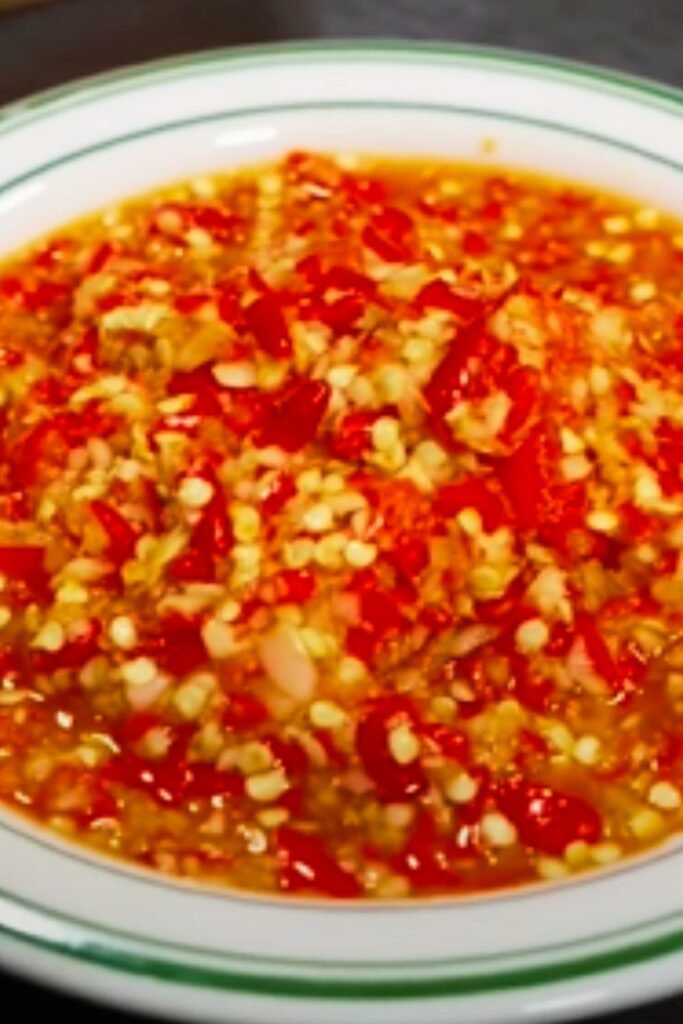
The beauty of belacan sauce lies in its simplicity, but each ingredient plays a crucial role:
- Belacan (Fermented Shrimp Paste): The foundation that provides umami depth and complexity. Look for blocks that feel firm and have a deep reddish-brown color.
- Fresh Chilies: Traditional recipes use bird’s eye chilies (cili padi) for their intense heat and brightness. The ratio of chilies to other ingredients determines the spice level.
- Lime Juice: Provides acidity that balances the pungency of belacan and brightens the overall flavor. Use calamansi limes if available for authentic flavor.
- Shallots: Adds sweetness and depth. The mild onion flavor complements the shrimp paste perfectly.
- Sugar: Just a touch to balance the heat and acidity. Palm sugar is traditional, but brown sugar works well too.
- Salt: Enhances all the flavors. You might need less than you think since belacan is already salty.
- Optional Aromatics: Garlic, lemongrass, or torch ginger flower (bunga kantan) can be added for extra dimension.
Preparing Belacan for Use
Belacan in its raw form has an intense aroma that can be overwhelming. Properly preparing it is essential:
- Slice a portion from the block (typically 1-2 tablespoons for most recipes).
- Wrap the belacan in aluminum foil.
- Toast it in a dry pan over medium heat for 2-3 minutes per side, or until fragrant.
- Alternatively, roast it in an oven at 350°F (175°C) for about 5 minutes.
This toasting process mellows the intensity while enhancing the nutty, savory notes that make belacan so special. Your kitchen will definitely smell potent during this process—I always open windows and turn on fans!
Authentic Belacan Sauce Recipe
Here’s my family’s recipe for a traditional belacan sauce that pairs beautifully with seafood, grilled meats, or as a dipping sauce for vegetables.
Ingredients:
- 2 tablespoons toasted belacan
- 15-20 bird’s eye chilies (adjust to your heat preference)
- 4 shallots, peeled and roughly chopped
- 2 tablespoons fresh lime juice
- 1 teaspoon palm sugar or brown sugar
- ¼ teaspoon salt (adjust to taste)
- Optional: 2 cloves garlic, 1 stalk lemongrass (white part only)
Traditional Method (Mortar and Pestle):
- Toast the belacan as described above and let it cool.
- Crush the chilies and salt in a mortar until they form a rough paste.
- Add shallots and garlic (if using) and continue pounding until incorporated.
- Add the toasted belacan and pound until well combined.
- Mix in lime juice and sugar, adjusting to taste.
- Let the flavors meld for at least 15 minutes before serving.
Modern Method (Food Processor):
- Toast the belacan and let it cool.
- Roughly chop the chilies and shallots.
- Place all ingredients in a food processor.
- Pulse until you achieve your desired consistency—I prefer mine slightly chunky rather than completely smooth.
- Transfer to a bowl and let the flavors meld for at least 15 minutes.
Storage:
Belacan sauce is best used fresh, but it can be refrigerated in an airtight container for up to 1 week. The flavors will intensify over time, and you may need to add a splash of lime juice to refresh it before serving.
Variations of Belacan Sauce
Belacan sauce varies across Malaysia, with regional differences reflecting local preferences and available ingredients:
Penang-Style Belacan:
- Includes torch ginger flower (bunga kantan)
- Often less sweet and more tangy
- Sometimes includes a touch of coconut milk
Sarawak-Style Belacan:
- Incorporates local Sarawak chilies
- Often mixed with local fruits like dabai
- More pungent variety with deeper fermentation
Nyonya-Style Belacan:
- Includes more aromatics like lemongrass and galangal
- Has a balance of sweet, sour, and spicy elements
- Often incorporates kaffir lime leaves
Cooking with Belacan Sauce
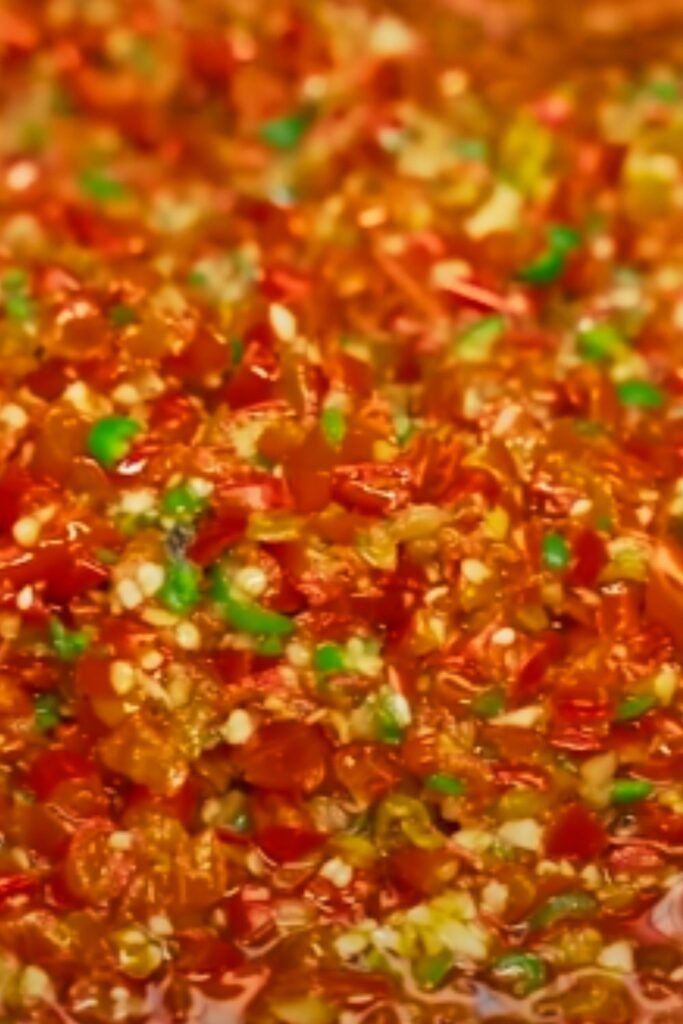
While belacan sauce shines as a condiment, it’s also fantastic as a cooking ingredient. Here are some ways to incorporate it into your cooking:
As a Marinade:
Combine 2 tablespoons of belacan sauce with 1 tablespoon of oil and marinate chicken, fish, or shrimp for 30 minutes before grilling or pan-frying. The sauce infuses the protein with incredible flavor while helping it caramelize beautifully.
For Stir-Fries:
Add 1-2 teaspoons of belacan sauce to your stir-fry just after the aromatics have softened. It adds a remarkable depth to vegetables like water spinach (kangkung), green beans, or eggplant.
In Soups and Stews:
A small amount (½-1 teaspoon) stirred into soups or curries near the end of cooking adds a beautiful complexity without overwhelming the dish.
Flavor Booster:
Mix a teaspoon into rice just before serving for a fragrant, flavorful side dish that pairs wonderfully with grilled meats or seafood.
Traditional Pairings for Belacan Sauce
In Malaysian Chinese cuisine, belacan sauce traditionally accompanies these dishes:
- Steamed or Grilled Fish: A small dollop on the side elevates the natural sweetness of fresh fish.
- Nasi Ulam: This Malaysian herb rice salad comes alive with a touch of belacan sauce.
- Boiled or Steamed Vegetables: Plain vegetables transform into a crave-worthy dish with belacan sauce on the side.
- Fried Chicken: The savory, spicy notes cut through the richness of fried foods.
- Congee: A small spoonful mixed into plain congee creates a completely different flavor experience.
Modern Serving Suggestions
While respecting tradition, I’ve found belacan sauce works beautifully in fusion applications:
- Stir a teaspoon into mayonnaise for an umami-packed spread for sandwiches or burgers
- Mix with olive oil to create a punchy dressing for roasted vegetables or salads
- Add to scrambled eggs for an extraordinary breakfast with Asian flair
- Use as a dipping sauce for roasted potatoes or sweet potato fries
- Combine with butter to make a compound butter for steak or grilled corn
Nutritional Benefits of Belacan
Beyond its incredible flavor, belacan offers several nutritional benefits:
| Nutrient | Benefit |
|---|---|
| Protein | High protein content from fermented shrimp |
| Calcium | Good source of calcium for bone health |
| Vitamin B12 | Contains B12, often lacking in plant-based diets |
| Probiotics | Fermentation process creates beneficial bacteria |
| Iodine | Contains iodine from seafood, important for thyroid function |
| Selenium | Antioxidant mineral that supports immune function |
| Zinc | Supports immune system and wound healing |
| Umami Compounds | Allows for reduced salt usage in cooking |
The chilies in belacan sauce also provide capsaicin, which may boost metabolism and has anti-inflammatory properties.
Finding and Selecting Quality Belacan
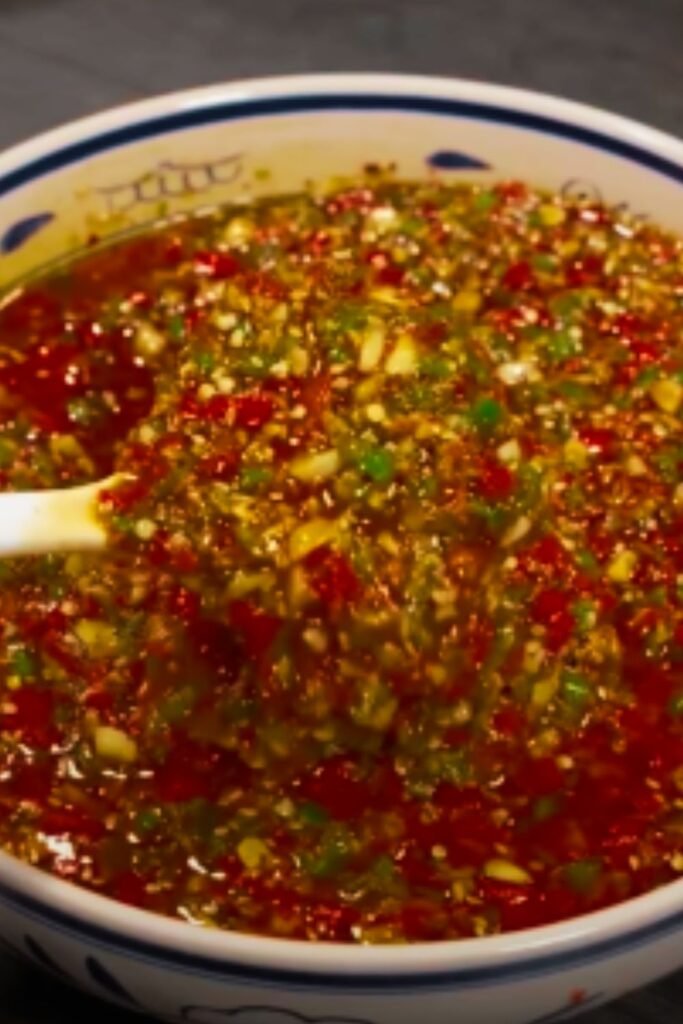
For those outside Malaysia, finding good belacan might require some searching. Here’s what to look for:
- Appearance: Quality belacan should have a deep reddish-brown color and be firm but not rock-hard.
- Aroma: While pungent, it should smell like fermented shrimp, not overwhelmingly fishy or ammonia-like.
- Packaging: Look for well-sealed packaging without signs of moisture or mold.
- Ingredients: Ideally, it should contain only shrimp and salt.
You can find belacan in:
- Asian grocery stores with Southeast Asian sections
- Online specialty food retailers
- Some well-stocked international supermarkets
If you can’t find belacan, Thai shrimp paste (kapi) can be substituted, though the flavor profile is slightly different.
Making Belacan at Home: An Adventure
While traditionally made in coastal villages where fresh shrimp is abundant, adventurous home cooks can attempt making belacan. It’s a lengthy process, but the results can be rewarding:
- Start with 2 pounds of very fresh small shrimp or krill.
- Rinse thoroughly and drain well.
- Add 1/4 cup sea salt and mix thoroughly.
- Spread on bamboo mats in a single layer and sun-dry for 8 hours.
- Pound into a paste using a mortar and pestle.
- Shape into blocks and sun-dry for another 3-5 days.
- Pound again and reshape.
- Continue the drying and pounding process for up to 2 weeks until the paste darkens and develops a concentrated aroma.
This process requires consistent sunny weather and patience, but the result is a truly artisanal product.
Common Mistakes to Avoid
When working with belacan sauce, keep these tips in mind:
- Don’t Skip Toasting: Raw belacan has an overpowering aroma and taste that can dominate dishes unpleasantly.
- Balance Is Key: Too much belacan can overwhelm other flavors. Start with less than you think you need.
- Mind the Heat Level: Adjust the number of chilies to your tolerance—belacan sauce should be enjoyable, not painful!
- Don’t Overcook: When using belacan sauce in cooking, add it later in the process to preserve its complex flavors.
- Storage Matters: Keep belacan blocks wrapped tightly in the refrigerator to prevent the aroma from permeating other foods.
Q&A Section
Q: Can I make a milder version of belacan sauce for those who can’t handle spice? A: Absolutely! Reduce the number of bird’s eye chilies and replace them with milder varieties like red bell peppers. You can also remove the seeds from the chilies before processing.
Q: Is there a vegetarian substitute for belacan? A: Yes, fermented soybean paste or miso can provide umami depth, though the flavor profile will be different. Some vegetarian “shrimp” pastes made from mushrooms or seaweed are also available in specialty stores.
Q: How do I control the strong smell when preparing belacan? A: Toast it outdoors if possible, or use a well-ventilated kitchen with fans and open windows. Wrapping it in foil helps contain the aroma during toasting.
Q: Can I freeze belacan sauce? A: Yes, belacan sauce freezes well. Portion it into ice cube trays, freeze, then transfer the cubes to a freezer bag. Thaw only what you need.
Q: Why does my belacan sauce taste bitter? A: Bitterness can come from overtoasting the belacan or using too much. Make sure to toast just until fragrant, and balance the flavor with adequate lime juice and sugar.
Q: How do I adjust the consistency of belacan sauce? A: For a thinner sauce, add more lime juice or a splash of water. For thicker sauce, use fewer liquid ingredients or add more solid ingredients like shallots.
Q: Is belacan sauce healthy? A: In moderation, yes. It’s packed with nutrients from shrimp and chilies, and a little goes a long way, so calorie content is minimal. The main consideration is sodium content, as belacan is salt-preserved.
Q: Can I use belacan sauce as a gift? A: Homemade belacan sauce makes a wonderful gift for food enthusiasts. Package it in a sealed glass jar with a label noting ingredients and suggested uses, and advise refrigeration.
The Joy of Sharing Belacan Sauce
Making belacan sauce connects me to my Malaysian Chinese heritage in a tangible way. Whenever I prepare it, the powerful aroma fills my kitchen and transports me back to my grandmother’s home, where this sauce was always present at family gatherings.
What makes belacan sauce special is how it brings people together. Despite its intense aroma during preparation, the resulting flavor is so compelling that it creates converts with just one taste. I’ve seen initial skeptics become devoted fans after trying properly prepared belacan dishes.
If you’re new to Malaysian cuisine, belacan sauce offers a genuine taste of our culinary tradition. It represents the beautiful fusion of Chinese techniques with Malaysian ingredients that defines Malaysian Chinese cooking.
So go ahead—be brave and embrace the powerful punch of belacan sauce. Your taste buds will thank you, and you’ll gain insight into one of Southeast Asia’s most treasured flavor secrets.
